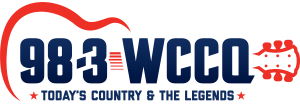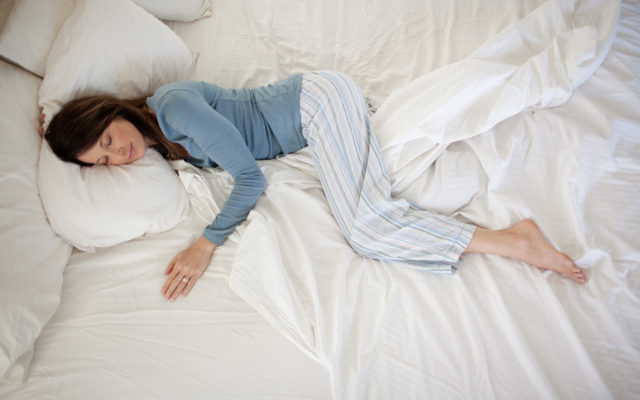The state’s 2 million-plus elementary and high school students can return to the classroom this fall.

Gov. J.B. Pritzker announced Tuesday June 23rd, that elementary and high school students can return to the classroom this fall, according to the Chicago Sun times. All schools will have to follow the Illinois Department of Public Heath requirements to reopen, face coverings must be worn and social distancing maintained. No more than 50 person gatherings and symptom screenings with temperature checks for all who enter the school along with increased cleaning and disinfection will be required.
You can read the full school reopening guidelines HERE
Here are some highlights:
Phase 4 Overview
In-person instruction may resume as regions transition to Phase 4. Districts must follow IDPH guidelines, which provide the following:
• Require use of appropriate personal protective equipment (PPE), including face coverings;
• Prohibit more than 50 individuals from gathering in one space;
• Require social distancing be observed, as much as possible;
• Require that schools conduct symptom screenings and temperature checks or require that individuals self-certify that they are free of symptoms before entering school buildings; and,
• Require an increase in schoolwide cleaning and disinfection.
All public and nonpublic schools in Illinois serving prekindergarten through 12th grade students must follow these guidelines.
It is important to note that these requirements are subject to change pursuant to updated public health guidance and changing public health conditions. School leaders should remain alert for any updates.
Schools and districts should also prepare for a return to remote instruction in the event of a resurgence of the virus or a second wave of it in the fall.
On June 18, 2020, Governor JB Pritzker signed PA 101-0643, the education omnibus legislation passed during the abbreviated special session. This Public Act addresses many education-related issues, including many important provisions to provide relief to schools and districts during public health emergencies. The legislation waives and modifies licensure requirements, graduation and coursework requirements, educator evaluations, and submission of dental and vision exams; allows early childhood grantees to serve as emergency child care centers; and waives state assessment requirements when the state receives a waiver from the U.S. Department of Education. PA 101-0643 also creates a new important tool schools and districts can utilize when IDPH requirements cannot be met in a completely in-person learning environment.
Schools and districts can now utilize Remote and Blended Remote Learning Days “when the Governor has declared a disaster due to a public health emergency pursuant to 15 ILCS 30/1,” such as the COVID-19 crisis Illinois and the world are currently experiencing. A region entering Phase 5 requires that a vaccine be developed to prevent additional spread of COVID-19, a treatment option be readily available that ensures health care capacity is no longer a concern, or no new cases reported over a sustained period.
Schools and districts are encouraged to provide completely in-person instruction for all students in Phase 4, provided that the school is able to comply with capacity limits and implement social distancing measures.
Health and Safety Protocols IDPH Guidance
Districts should proactively prepare staff and students to prevent the spread of COVID-19 or any other infectious disease. All employees should be trained on health and safety protocols related to COVID-19 prior to resuming in-person instruction. Consider referring to recommendations and strategies from the CDC: Guidance for Businesses and Employers and Considerations for Schools for guidance. Sections of this guidance were previously published in Part 2 and may be
updated.
Preparing for When a Student or Staff Member Becomes Sick
School districts need to be prepared and able to respond effectively when there is a case within the school community, whether it be a student or staff member participating in allowable activities. Schools and districts should communicate with families and staff that any individual who tests positive for COVID-19 or who shows any signs or symptoms of illness should stay home. Families and staff should also report possible cases to the school where the individual
attends school or works to initiate contact tracing.
Currently known symptoms of COVID-19 are fever, cough, shortness of breath or difficulty breathing, chills, fatigue, muscle and body aches, headache, sore throat, new loss of taste or smell, congestion or runny nose, nausea, vomiting, or diarrhea. Attendance personnel should request specific symptom reporting when absences are reported along with COVID-19 diagnoses and COVID-19 exposure. Information should be documented and shared with the health staff or other appropriate personnel and the local health department.
In accordance with state and federal guidance, school community members who are sick should not return to school until they have met criteria to return. Schools may wish to consider a symptom checklist for families and staff to use to determine if they are well enough to attend that day. CDC and IDPH guidelines for students who were suspected of having COVID-19, whether they were tested or not, state that 72 hours must elapse from resolution of fever without fever reducing medication and 10 days must pass after symptoms first appeared. It is recommended that medically fragile and immunocompromised students consult their medical provider prior to attending school.
Students or staff returning from illness related to COVID-19 should call to check in with the school nurse or building administrator (if a nurse is unavailable) following quarantine.
Any individual within the school environment who shows symptoms should be immediately separated from the rest of the school population. Individuals who are sick should be sent home. If emergency services are necessary, call 911. When interacting with students or staff who may be sick, school nurses and personnel should follow CDC guidance on standard and transmissionbased precautions.
Schools hosting allowable activities should designate a safe area to quarantine any individuals who are experiencing COVID-19-like symptoms and may be awaiting pickup/evaluation. Students should never be left alone and must always be supervised while maintaining necessary precautions.
Close off any areas of the school used by a sick person and do not use these areas until after proper cleaning and disinfection procedures have been completed. Open windows to increase air circulation in the area. It is advised by the CDC to wait at least 24 hours before cleaning and disinfecting; if 24 hours are not possible, wait as long as is possible. Clean and disinfect all areas, such as offices, bathrooms, common areas, shared electronic equipment, etc., used by the person who is sick. Vacuum the space, if needed, with a high-efficiency particulate air (HEPA) filter, if available. Do not vacuum a room or space that has people in it. Wait until the room or space is empty to vacuum, such as at night, and temporarily turn off room fans and the central HVAC system that services the room or space, so that particles that escape from vacuuming will not circulate throughout the facility. The area can be opened for use once it has been appropriately
disinfected. Ensure cleaning products are stored and used a safe distance away from children and staff.
Individuals who did not have close contact with the person who is sick can return to work immediately after disinfection. Those who had contact with someone who tested positive for COVID-19 or is suspected of having COVID-19 infection should isolate at home and monitor for symptoms for 14 days. Close contact means the individual was within 6 feet of the individual with symptoms for more than 15 minutes. Additional cleaning and disinfection is not necessary if more than seven days have elapsed since the person who is sick visited or used the school.
Continue routine cleaning and disinfection. This includes everyday practices that schools normally use to maintain a healthy environment.
Hand Hygiene
Districts should encourage frequent and proper handwashing. Ensure availability of supplies, such as soap and paper towels, hand sanitizer, tissues, etc., for all grade levels and in all common areas of the building. Cloth towels should not be used. Handwashing with soap and water is always the first recommended line of defense, but where this is not feasible or readily accessible, the use of hand sanitizer with at least 60% alcohol may be used. Districts should be cognizant of
any students or staff members with sensitivities or allergies to hand sanitizer or soap and ensure easy access to alternative handwashing stations.
Hands should be washed often with soap and water for 20 seconds. It is recommended that hand hygiene is performed upon arrival to and departure from school; after blowing one’s nose, coughing, or sneezing; following restroom use; before food preparation or before and after eating; before/after routine care for another person, such as a child; after contact with a person who is sick; upon return from the playground/physical education; and following glove removal. Districts should determine any “hot spots” where germ transmission may easily occur and ensure hand sanitation/handwashing supplies are readily available.
Additionally, districts should adhere to recommendations for safe hand sanitizer use, including:
• Alcohol-based hand sanitizers should be used under adult supervision with proper child
safety precautions and stored out of reach of young children to reduce unintended,
adverse consequences. It will be necessary to ensure that students do not ingest hand
sanitizer or use it to injure another person.
• Alcohol-based hand sanitizers must be properly stored – which includes away from high
temperatures or flames – in accordance with National Fire Protection Agency
recommendations.
• Hand sanitizers are not effective when hands are visibly dirty.
• Alcohol-based hand sanitizers do not remove allergenic proteins from the hands.
• Staff preparing food in the cafeteria/kitchen should ALWAYS wash their hands with soap and water. The IDPH Food Service Sanitation Code does not allow persons who work in school cafeteria programs to use hand sanitizers as a substitute for handwashing.
• The Food and Drug Administration controls sanitizers as over-the-counter drugs because they are intended for topical antimicrobial use to prevent disease in humans. Educate staff and students on healthy hygiene and handwashing to prevent the spread of infection. Schools may wish to post handwashing posters in the bathrooms, hallways, classrooms, and other areas, as appropriate. See Centers for Disease Control and Prevention:
Handwashing: Clean Hands Save Lives for free resources. Ensure availability of resources for teachers, nurses, and other staff members, so they can appropriately train students or review handwashing procedures. Various classroom lesson, activities, and resources are available.
Districts should also consider additional signage to display on the correct methods for sneezing and coughing. Staff and students should be directed and encouraged to avoid touching the face (eye, nose, mouth) to decrease the transmission of COVID-19 or other infectious diseases.
Face Coverings
All individuals in school buildings, including all public and nonpublic schools that serve students in prekindergarten through grade 12, must wear face coverings at all times unless they are younger than 2 years of age; have trouble breathing; or are unconscious, incapacitated, or otherwise unable to remove the cover without assistance. Face coverings must be worn at all times in school buildings even when social distancing is maintained. Face coverings do not need to be worn outside if social distance is maintained. It is recommended that schools require physicians notes for students and staff who are not able to wear a face covering due to trouble breathing. It is recommended that schools and districts update policies to require the wearing a face covering while on school grounds and handle violations in the same manner as other policy violations.
Teachers may use face shields in lieu of masks. Face shields may be useful in situations where it is important for students to see how a teacher pronounces words (e.g., English Learners, early childhood, foreign language, etc.).
There is significant evidence that face coverings provide protection and decrease the spread of COVID-19. Ensure that the face covering fully covers the mouth and nose, and that the covering fits snugly against the sides of the face with no gaps. Reusable face coverings should be machine washed or washed by hand and allowed to dry completely after each use. Districts may wish to maintain a supply of disposable face coverings in the event that a staff member, student, or visitor does not have one for use. For additional information, visit CDC: Coronavirus Disease 2019 (COVID-19)-Cloth Face Covers. Additionally, pay special attention to putting on and removing face coverings for purposes such as eating. After use, the front of the face covering is considered contaminated and should not be touched during removal or replacement. Hand hygiene should be performed immediately after removing and after replacing the face covering.
See https://www.cdc.gov/hai/pdfs/ppe/PPE-Sequence.pdf
https://www.cdc.gov/coronavirus/2019-ncov/downloads/cloth-face-covering.pdf.
Social Distancing
Districts should develop procedures to ensure 6-foot physical distance from other persons as much as possible. The expectation pertains to students and staff members in all areas and settings to the greatest extent possible. Districts may wish to post visual reminders throughout school buildings and lay down tape or other indicators of safe distances in areas where students congregate or line up (e.g., arrival and departure, lunchroom lines, hallways, recess lines, libraries, cafeterias).
Districts may wish to consider “staggering” schedules for arrivals/dismissals, hall passing periods, mealtimes, bathroom breaks, etc. to ensure student and staff safety. Staff and students should abstain from physical contact, including, but not limited to, handshakes, high fives, hugs, etc.
Staff break areas should be arranged to facilitate social distancing. Break times should be staggered to minimize eating with mask off near others.
Symptom Screenings
Schools and districts must conduct temperature and symptom screenings or require selfcertification and verification for all staff, students, and visitors entering school buildings.
Individuals who have a temperature greater than 100.4 degrees Fahrenheit/38 degrees Celsius or currently known symptoms of COVID-19, such as fever, cough, shortness of breath or difficulty breathing, chills, fatigue, muscle and body aches, headache, sore throat, new loss of taste or smell, congestion or runny nose, nausea, vomiting, or diarrhea, may not enter buildings.
Individuals who exbibit symptoms should be referred to a medical provider for evaluation, treatment, and information about when they can return to school.
Personal Protective Equipment
Ensure that appropriate personal protective equipment (PPE) is made available to and used by staff, as needed, based on exposure risk. Provide training to staff prior to the start of student attendance on the proper use of PPE, including putting on and removing PPE. In addition, training should also include directions on the proper disposal of PPE since inappropriate application or removal of PPE can increase the transmission. Employers are required to comply with Occupational Safety and Health Administration standards on bloodborne pathogens, including the proper disposal of PPE and regulated waste. See Appendix F for examples and uses of PPE and CDC guidelines.
Schoolwide Cleaning and Disinfection to Prevent the Spread of Infection
Districts should develop sanitation procedures per recommendations of the CDC, IDPH, and local health departments. More frequent cleaning and disinfection is necessary to reduce exposure. Visibly dirty areas should be scrubbed to remove visible dirt/soilage and then an approved disinfectant should be used to kill germs.
Clean frequently touched surfaces (e.g., door handles/knobs, desktops/tabletops, countertops, light switches, pencil sharpeners, computer keyboards, hands-on learning items, phones, toys, cubbies/coat and backpack areas, sinks and faucets, buses/vans) on a daily basis. Cloth toys or other cloth material items that cannot be disinfected should not be used.
Determine means to sanitize soft surfaces, such as carpeted areas, rugs and curtains. Clean with an approved soap/disinfectant for the surface area. Launder at high temperatures, if possible, and dry. If cleaning with soap and water is not feasible, disinfect with a household disinfectant that has been registered with the Environmental Protection Agency (EPA) and follow contact times on the label. Districts may wish to revisit and revise any green cleaning policies. Vacuum as usual.
Districts may wish to consider posting scheduled cleaning times and maintain appropriate documentation upon the completion of cleaning. Ensure that EPA-approved disinfectants for use against the coronavirus are available to staff responsible for cleaning. If not available, consult your local health department for guidance on alternative disinfectants.
• Gloves and other appropriate Personal Protective Equipment must be used during cleaning and disinfection. Ensure that appropriate PPE is made available to and used by staff, as appropriate, based on job-specific duties and risk of exposure.
• Always follow label directions.
• Allow the required wet contact time.
• Keep all disinfectants out of the reach of children.
• Do not mix bleach or other cleaning products and disinfectants together.
• Ensure that cleaning supplies brought by staff and students are approved by the EPA.
Traffic Flow, Hallways, and Lockers
Face coverings must be worn at all times. Consider the following hallway procedures to adhere to social distancing requirements and IDPH limitations on gathering sizes, when possible:
• Limit number of persons within hallways at any given time to the greatest extent possible.
• Limit required movement of students between classes. Consider having staff rotate through classes rather than requiring movement/mixing of student groups.
• Provide hallway supervision using hall and bathroom monitors to ensure a limited number of persons enter bathrooms at one time.
• Hallways could have marked one-way paths and certain staircases could be designated one-way only, as possible.
• Place floor markings to delineate 6-foot distance between students in locations where they line up.
• Remove furniture or other items that may encourage congregating in certain areas.
• Limit number of riders in elevators to one or two students with an additional adult (when student needs continuous support or supervision).
• Suspend the use of lockers, if possible. Sharing lockers should be prohibited. If lockers must be used, consider staggering locker assignments and create schedules to stagger locker access to allow for 6-foot distancing between students. For example, students could be assigned to every other or every third locker depending on their width.
Cafeterias/Food Service
Schools should consider the number of students and adults in the cafeteria during each breakfast and lunch period and ensure that it does not exceed that maximum gathering size per the Restore Illinois plan (no more than 10 individuals during Phase 3 and no more than 50 individuals during Phase 4, if possible). Alternate scheduling or add meal service times to adhere to capacity limits.
Stagger the release of classrooms to the cafeteria to help ensure social distancing while students wait in line. If possible, consider delivering meals to classrooms or having students eat outdoors while ensuring social distancing is implemented. If students eat in the classroom, consider how an allergy-free area will be provided, as needed. Additionally, the room should be disinfected after eating prior to resuming classroom activities.
Meals should be individually plated. Buffets, salad bars, and the sharing of food and utensils should be prohibited. Ensure that students are served all items, including items such as milk and fresh fruits, rather than having students help themselves. Consider using disposable food service items (e.g., utensils, dishes). Ensure regular precautions are taken regarding food allergies and dietary needs. If disposable items are not available, ensure that all non-disposable food service
items are handled with gloves and washed with dish soap and hot water or in a dishwasher.
Areas where students consume meals should be thoroughly cleaned and disinfected between groups and after meals. Food service personnel must use appropriate PPE, including gloves and face coverings, while preparing and distributing food. Frequent hand hygiene should be required. Individuals should wash their hands after removing their gloves or after directly handling food service items that have been used.
Hand hygiene must be performed prior to and after eating a meal or consuming any food items. Face coverings must be removed during eating, so it is important to ensure 6-foot distance between individuals as much as possible. Considerations also should be given to food consumed during times other than mealtimes, such as by preschool students. Communicate clear mealtime expectations with students and staff.
Student Transportation
Schools and districts should create procedures to assure compliance with all applicable expectations under state and federal guidelines. All individuals on a bus must wear a face covering, no more than 50 individuals should be on a bus at one time, and social distancing must be maintained to the greatest extent possible. Students must undergo symptom and temperature checks, which may include self-certification, before boarding a bus. These procedures may need to be updated regularly. Students and families should be aware of procedures and expectations regarding transportation.
Drivers and monitors must wear approved and appropriate PPE and perform regular hand hygiene. See Appendix F for information regarding PPE. Drivers and monitors must undergo symptom and temperature checks or self-certify and verify that they are free of symptoms before the start of each workday. Drivers and monitors who have a temperature greater than 100.4 degrees Fahrenheit/38 degrees Celsius or symptoms of COVID-19 may not work. Drivers and monitors who become ill during their route should contact their supervisor immediately. All individuals on a bus must wear a face covering. Student transportation should apply the most feasible social distancing guidelines. The CDC recommends that entities should “create distance between children on school buses …when possible.” No more than 10 individuals may be on a vehicle at any one time during Phase 3. No more than 50 individuals may be on a vehicle at any one time during Phase 4. All physical changes to school transportation vehicles must meet Illinois Department of Transportation (IDOT) and Secretary of State rules and regulations.
Districts are encouraged to provide visual guides to ensure that students comply with expectations set forth by the IDPH (e.g., floor decals, colored tape, or signs to indicate where students should not sit or stand may be used to assist in compliance).
Seating charts are also recommended. Seating arrangements with respect to social distancing can be adjusted for students who live in a household with other students. Schools and districts are encouraged to monitor students at school loading and unloading zones. IEP or 504 teams should meet to determine individual transportation needs for students who require special accommodations.
Considerations should be given to the provision of appropriate supplies to prevent the spread of COVID-19 (e.g., hand sanitizers, gloves, face coverings, tissues, and trash receptacles). All required IDOT inspections should occur. In addition, sanitization should be completed daily or between use on all vehicles used for student transportation. Individuals should disinfect vehicles using only products that meet the EPA criteria and manufacturers’ guidelines.
Physical Education, Gymnasiums, Pools, and Locker Rooms
Physical activity can support students’ overall health and well-being and help reduce stress and anxiety. Face coverings must be worn. No more than 10 individuals may be in one space at any one time during Phase 3. No more than 50 individuals may be in one space at any one time during Phase 4. Activities must allow for 6-foot distance between students as much as possible.
Games and sport activities that require close guarding and any potential physical contact with another player must be avoided in order to comply with IDPH requirements. Whenever feasible and weather permitting, educators should select outdoor physical education activities that allow natural social distancing.
If physical education must be taught inside, consider using separate partitions in open spaces, utilizing markings on the gymnasium floor/wall/field to maintain distance between participants.
Hand shaking, high fives, or other physical contact is prohibited. It is recommended that educators have access to technology to broadcast instruction to maximize social distancing (e.g., megaphone or microphone).
Schools and districts with pools must follow IDPH guidance on swimming facilities.
Districts should consider eliminating the need for use of locker rooms, as well as allowing students to participate in activities without changing clothing. Shoe changes can be done in the classroom prior to arrival in PE. Lockers that are used should not be shared, and showers should not be required for activities.
The use of shared equipment is not recommended. Any shared equipment must be cleaned between each student use and disinfected at the end of each class. Fitness center equipment, such as treadmills, ellipticals, stationary bicycles, weights, etc., should be cleaned and sanitized before and after each class. Focus on frequently touched surfaces, such as keypads, hand weights, handles, etc. Maintaining 6-foot distance between participants may include using only every other treadmill/bicycle or installing dividers between each machine or equipment piece.
Students and staff should perform hand hygiene at the start and end of each class period or when hands are visibly dirty. Students should also perform hand hygiene after the use of each pieceof equipment.






